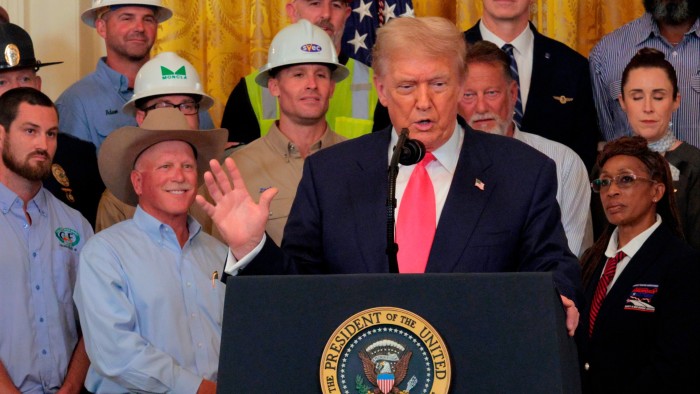
WASHINGTON D.C. – In a surprising development, President Donald Trump announced on Thursday that the United States and China have officially signed a trade truce. This announcement comes two weeks after a preliminary understanding was reportedly reached in London.
Breaking: US-China Trade Deal Signed
President Trump revealed the signing during a White House briefing, stating, “We just signed with China yesterday,” although he did not provide further details. This marks a significant step in easing the ongoing trade tensions between the two economic giants.
Immediate Impact
A White House official confirmed that the two countries have “agreed to an additional understanding for a framework to implement the Geneva agreement,” referencing the trade talks held in May. These discussions initially led to a temporary truce, which had not been formalized until now.
Key Details Emerge
According to insiders familiar with the negotiations, the recent agreement has put into writing what was previously negotiated but not documented. Prior to the London talks, U.S. officials sought a handshake deal with China, although some experts criticized the lack of formal documentation.
The Geneva agreement involved significantly reducing tariffs on each other for 90 days while working towards a comprehensive trade accord.
Industry Response
Commerce Secretary Howard Lutnick, who played a key role in the negotiations, stated, “That deal was signed and sealed two days ago,” during an interview with Bloomberg Television. The business community has responded cautiously optimistic, hoping for increased trade stability.
“While we need to look at the details, if the deal brings more certainty, predictability, and fairness into US-China trade, it will be a great victory for the people of both countries,” said Sean Stein, president of the US-China Business Council.
By the Numbers
- Tariffs reduced for 90 days
- 10% reciprocal tariffs secured by China
- 20% additional tariffs remain on Chinese imports
What Comes Next
The Trump administration is under pressure to finalize broader trade agreements with multiple partners before a July 9 deadline, when previously announced “reciprocal” tariffs could be reinstated. Ongoing negotiations with countries like India, Vietnam, South Korea, Japan, and the EU aim to avert these tariffs.
Background Context
The trade tensions between the U.S. and China have been marked by tit-for-tat tariff increases and disagreements over issues such as Chinese rare earth exports and U.S. export controls. The Geneva talks initially sought to address these issues, but progress stalled until recent developments.
Expert Analysis
Trade experts suggest the agreement could pave the way for more stable economic relations between the U.S. and China. However, the lack of details and the ongoing presence of significant tariffs indicate that challenges remain.
Regional Implications
The trade truce is expected to impact global markets, especially in sectors like semiconductors, consumer electronics, and pharmaceuticals. The administration is also considering global tariffs in these areas, which could have wide-reaching effects.
The timing is particularly significant because it aligns with efforts to stabilize international trade relations before the upcoming tariff deadline.
As the situation develops, all eyes will be on further negotiations and the potential for a comprehensive trade accord that could redefine U.S.-China economic ties.




